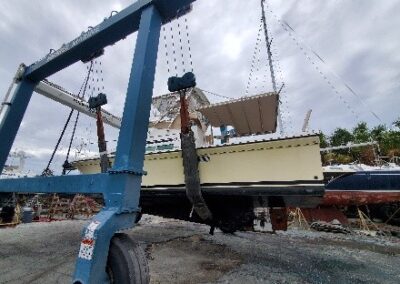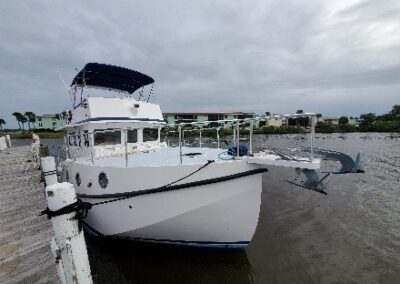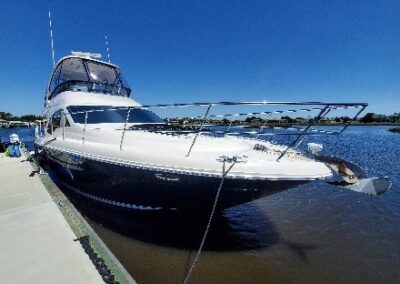Trawler & Motor Yacht Surveys
My Yacht Surveyor Experience
When I began surveying I created a worksheet to guide my inspection process. Over the years I have refined the list to ensure it remains relevant and incorporates various details I feel offer insight into the subject vessel during and after the survey. So much is seen and discussed during the survey process that it is nearly impossible to retain all of it making a well-organized detailed report invaluable. This is especially true for vessels that do not have detailed owner’s manuals or that have been rebuilt/modified over time making the original documentation irrelevant. Once the survey and report have been completed it can be used to evaluate whether the vessel matches expectations for its potential new owner.
The amount of experience I have is helpful. The reports I have on file are good references when I am going to be surveying a similar model or in some cases the same boat over again. My files are well organized making them a treasure trove of information.
The Process
Some flexibility can be accommodated during my yacht survey process but generally the first day is accomplished dockside to allow time to go through the boat without interruption of the shore power and the noise of machinery drowning out the equipment being operated. Appliances such as clothes washers, dishwashers, refrigerators, freezers and air-conditioners are better evaluated without stopping and starting them. AC generators will be operated, closely monitored and loaded to capacity if possible.
During the dockside inspection the locations of equipment that will be used underway such as engine controls, steering components, thrusters, stabilizers and rotating equipment can be noted. If removals are necessary to access them during the trial-run this will be determined and done before getting underway. Deck equipment such as the windlass and tender loading gear will be operated. The tender will be evaluated. Lead acid batteries and chargers will be located and tested.
Navigation electronics are also evaluated during the dockside inspection. Far better to go through their various features, evaluate their function, and ask questions without interfering with the piloting of the vessel. Underway piloting is job number one! After the dockside inspection, the autopilot and stabilizers are generally the only pieces of equipment that will not have been fully evaluated.
The second day the vessel will be hauled to check its underbody and make sure it is adequately cleaned for the trial-run or sea-trial depending on the proximity of the survey to open water and conditions at the time of the survey. It will be run through its paces using the main engine(s) and wing engine if so equipped. Trial-runs also provide an opportunity to evaluate inverter systems and the engine alternators that maintain the batteries while they are in use.
I usually work alone but have associates and I can call to help with surveying larger yachts.
Upon returning to the dock from the haul-out/trial-run the boat will be tied up and shore power restored. Fluid samples will be taken from the machinery then a meeting usually takes place to review what has occurred during the survey. After all that it is time to leave.
Reporting
My yacht survey reports, and fluid analysis when that is part of my survey will usually be ready within two to three days after I return to my office. Sometimes travel adds a day to the process. I send several emails. One email with the survey findings (“The list”). Then the full report pdf and dropbox link to the survey photos. After that I make myself available to review and answer questions as needed.
Sample Surveys
Click for sample surveys:
Defever 44 Offshore Cruiser 1999
Hatteras 53 EDMY 1983
Nordic Tug 42 2010


